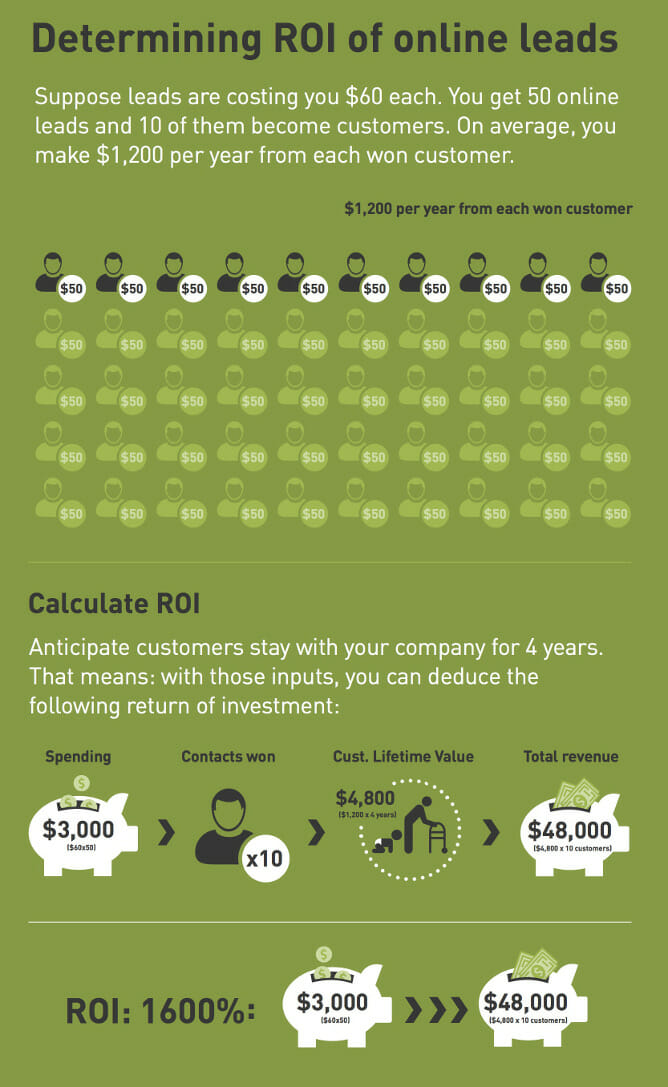In the previous post in our series on making the most of online leads, we covered communicating with and nurturing your leads. In this final post in the series, we’ll measure the return on investment (ROI) from your online lead efforts.
If figuring out the ROI from sales leads is new to you, don’t be intimidated. The principle is simple: Ideally, the revenue you make from your leads, over the course of their relationship with you, will be a multiple of what you spent to acquire them and turn them into clients.
Let’s take a brief example. Start by asking yourself:
- What is your cost per lead?
- How many leads are you buying?
- What percentage of leads are turning (converting) into clients?
- How long will these clients stay with you?
- How much do you make in fees each month from leads who become clients?
Now, let’s assume each lead costs you $60 to acquire. If you get 50 online leads this year and 10 become clients, your annual conversion rate is 20 percent.
Also, let’s assume you expect these clients to stay with your company for four years, and you make, on average, $1200 per year from each of them.
Formula for calculating ROI
Here is the simple formula for calculating ROI:
Total amount you’re spending = $3,000 ($60 x 50)
Number of new customers = 10
Lifetime value per customer = $4,800 ($1200 x 4 years)
Total revenue = $48,000 ($4,800 x 10 customers)
ROI = 1600% ($48,000 / $3,000)
In our example, for each $1 you invested, you earn $16. That’s an amazing ROI, but as the saying goes, “Your mileage may vary.” Especially when you start out, it’s best to be conservative with your expectations.
Another thing to bear in mind about ROI: while the upfront costs of investing in online lead acquisition and nurturing may be off-putting, it can really pay off in the long run. If you treat your clients as clients for life, when they add properties to their portfolio — or refer you to other property owners — in turn, your business will grow.
With more and more networking happening online for property managers, it’s important to have a strategy in place to make the most of your online sales leads. This boils down to being the first to contact a lead and not giving up in your follow-up communications. Remember that throughout this process, your image is on the line and a good lasting impression is what will propel your business forward.
Read more on Growth


